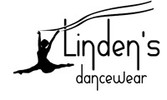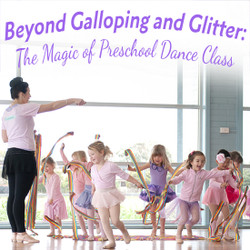Beyond Galloping and Glitter: The Magic of Preschool Dance Class
Posted by Angel P. on 2nd Oct 2025
From the outside, a preschool dance class might look like a room full of toddlers pretending to gallop like ponies or scoop imaginary ice cream. There’s plenty of giggling, twirling, and pretend play—but beneath the fun is a carefully designed learning environment.
Preschool dance is far from just “playtime.” It’s a structured, developmentally appropriate class where every movement has meaning. Young dancers aren’t just building confidence and friendships—they’re laying a foundation for lifelong physical, cognitive, and emotional growth.
What Are They Really Learning?
Let’s take a look at the deeper value of that weekly class.
Physical Development
Each class supports gross and fine motor development. Movements like skipping, leaping, and tiptoeing improve coordination, balance, and strength. These are key skills for all physical activity—not just dance.
Preschool dancers also work on flexibility, spatial awareness, and body control. They learn where their bodies are in space and how to move with purpose. This awareness supports posture, physical safety, and agility for years to come.
Creativity and Expression
Dance gives children a powerful outlet to explore their imagination. When your preschooler “stretches like a mermaid” or “tiptoes through the jungle,” they’re learning to express ideas and emotions through movement.
This early exposure to creative thinking helps kids become better problem-solvers and more innovative thinkers as they grow.
Musicality and Rhythm
Even the youngest dancers begin to recognize patterns in music, identify changes in tempo, and connect movements with rhythm. These foundational musical skills support everything from future music lessons to emotional regulation.
Focus, Listening, and Routine
Young dancers quickly learn how to follow instructions, wait their turn, and listen for cues. These are essential school-readiness skills. The structure of dance class builds patience, memory, and focus—all while keeping things playful and age-appropriate.
Social Skills and Confidence
Dancers as young as three begin learning teamwork and cooperation. Whether it's waiting in line, sharing space, or performing a group routine, they’re practicing valuable life skills every week.
Even more important? They’re building confidence. Each curtsy, each round of applause, and each time they master a new movement reinforces a belief in themselves.
What Looks Like Play Is Purposeful
Over the years, I’ve walked through many studios and watched dozens of preschool classes in action. One day, I saw a teacher lead the class in “building an ice cream cone” with movements—scoops, sprinkles, cherries on top. The kids were completely engaged. What looked like pretend play was actually a cleverly disguised flexibility and coordination exercise.
In another class, children galloped like horses. Parents watching may have seen simple fun, but teachers saw a foundational lesson in line structure, foot placement, and switching leads—important concepts for future choreography.
Even the youngest students were gently encouraged to change the foot in front, follow a leader, and practice safe movement patterns—all in a format that felt fun and magical to them.
Why Start Dance Early?
The preschool years are a golden window for motor and cognitive development. Introducing dance during this time gives children:
- Greater body awareness and physical control
- A healthy relationship with movement and exercise
- A foundation for musicality and rhythm
- Improved classroom readiness and social skills
- A creative outlet for emotion and expression
- A boost in self-esteem and independence
Preschool dance isn’t just for the child who will someday stand on a stage. It’s for any child who can benefit from moving, exploring, and growing in a supportive and imaginative environment.
Final Thoughts: Growing Through Galloping and Glitter
Preschool dance may look like playful chaos from the outside—but once you step into the studio, you see just how intentional every movement, game, and giggle really is. These classes aren’t just about dancing—they’re about growing: physically, emotionally, socially, and creatively. Whether your child is leaping across the floor with a sparkly ribbon, tiptoeing through an imaginary forest, or galloping on a magical pony trail, they’re learning more than just dance. They’re building confidence, coordination, and a love for movement that can last a lifetime.
At Linden’s Dancewear, we’re here to support every stage of that journey—especially the sparkly, giggly, imaginative beginnings. We carry a variety of play-based dance accessories designed just for your little mover—think magical capes, glittery wands, colorful skirts, and more to spark creativity both in and out of class.





